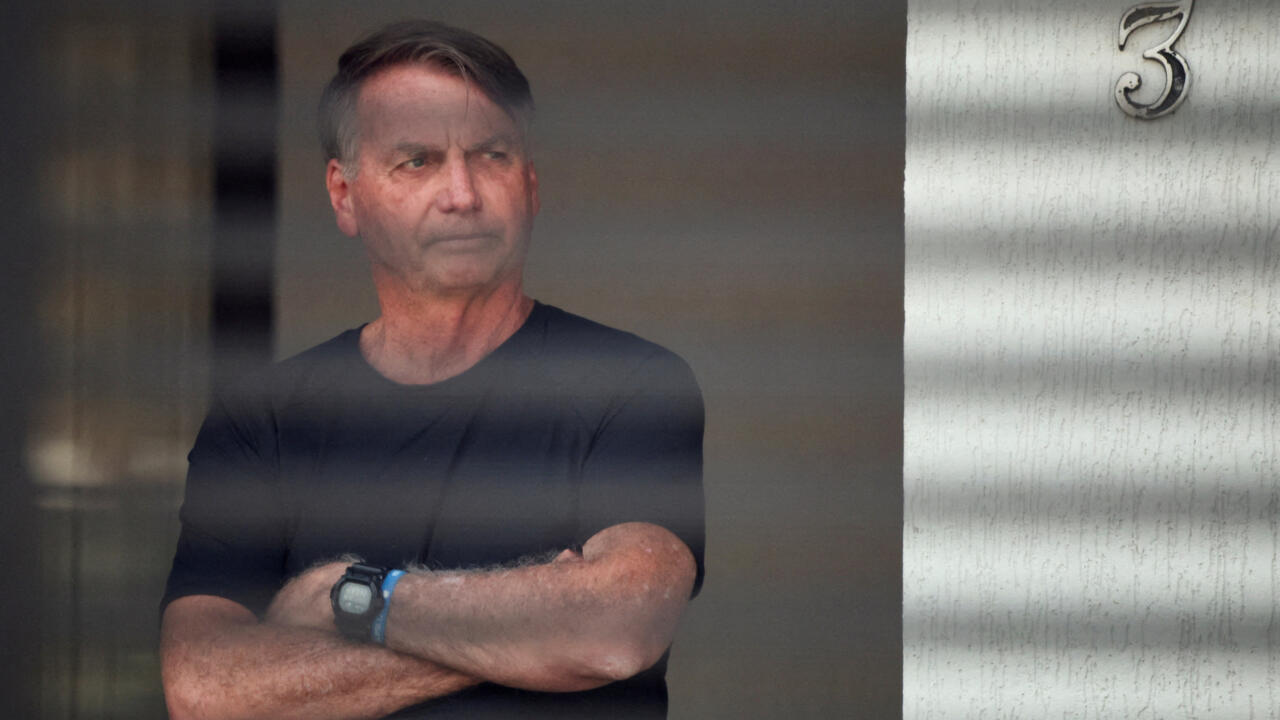The extent to which Bolsonaro moved every lever he could to get reelected cannot be overstated. At the beginning of the year, the federal government pushed through Congress a 50% increase in the direct cash payment program “Auxilio Brasil”, Bolsonaro’s rebranded version of “Bolsa Familia”, a Workers’ Party program. The move also expanded to include more families on the program. Then, after the first round of voting, his administration used State-owned banks to start offering government-backed micro-loans to beneficiaries of Auxilio Brasil. Bolsonaro also announced over
178 billion reais in public expenditure for 2023 in order to try and appeal to working class voters.
In addition, Bolsonaro was helped immensely in his campaign by social media platforms, Brazil’s election finance laws and personal cash donations by wealthy allies. According to researchers at the Federal University of Rio de Janeiro, YouTube’s algorithm overwhelmingly recommended pro-Bolsonaro content to its users, especially from “Jovem Pan” (55% of first recommendations), a major media ally to Bolsonaro. It seems like YouTube’s new algorithmic content policy that seeks to recommend content that is “informative, plural and from reputable sources”
may have even privileged Jovem Pan, as it may have been labelled as a mainstream media outlet.
Bolsonaro also counted on a large financial war chest assembled by his business allies. While Brazilian electoral law prohibits corporations from donating to political campaigns, the limits to public contributions are lax. Billionaires can donate up to 10% of their gross yearly income to campaigns, which netted Bolsonaro with a nearly 100 million reais worth of donations or
21 times more than Lula.
Then, on election day, Bolsonaro’s government mobilized the federal highway police force to institute highway checkpoints throughout the country, especially targeting the Northeast and areas of the Southeast, which were known to be part of Lula’s stronghold. When the Electoral Court’s president, Justice Moraes, vetoed those operations on election day, the
federal highway police defied his ruling by ignoring his orders to stand down. That was the last straw in a series of illegal measures.
Even against all of this, PT won, and an incumbent president was defeated at the ballot box for the first time since return to democracy in 1985. In order to understand how Lula managed to assemble his coalition in a hotly contested race, we need to first understand what his broad political front actually was. The Workers’ Party leadership recognized that they needed all the help they could muster in order to beat Bolsonaro, but teaming up with others did not mean relinquishing or abdicating its pro-worker roots.
Lula won the election by forming a real coalition. Not the type usually found in western liberal organisations that mostly resembles an abusive relationship, where the centrist liberals dictate the technocratic policies and the leftists are told to just shut up or they will help elect a right wing ghoul. In PT’s winning coalition, partners get to debate politics on its merits and decide what is popular with voters and what would be a winning message.
This equal footing in the coalition wasn’t just given to us though. Brazil isn’t some magical land where liberals are especially enlightened and allow the left to have real input. A great number of them did help to elect Bolsonaro after all. Brazilian liberals didn’t just easily acquiesce to Lula’s working class politics. They have put up quite the fight and the usual suspects are already back to pressuring PT to govern as a
neoliberal centrist. Again, they aren’t genius political operators: there is very little intelligence in demanding that PT govern like the now defunct centre-right PSDB. After all, those were the policies that got us Bolsonaro in the first place and buried PSDB in the process.
The reason for such a balanced coalition isn’t political discourse in the public sphere either. We didn’t “market place of ideas” our way into this. While Lula is a phenomenal politician with a singular charisma and talent of engaging his audience, his main trump is power. Simply put, PT is a massive organization, born out of a coalition between the labour movement, leftist academics, left-wing clergy, former left-wing guerrillas and multiple social movements, including MST, the largest. No matter the city or the candidate, PT will always land at least 25% of the vote in Brazil. The size, popularity, organization and resources of the party enables leadership to wield such power in favour of their own policies and campaigning. Lula himself has also been the most popular president Brazil has ever had. At the end of his second term, he had an 83% approval rating. Those are Saddam Hussein-like numbers. This buys you significant leverage.
Furthermore, Lula is a real moderate. Not the US centrist democrat or Blairite type, but a real one, with negotiating abilities honed from decades in the union movement. He uses these abilities to leverage his power and reach compromises with both sides of his coalition. PT did not simply co-sign the pro-business side’s politics, or focus-grouped their way into a platform. They combined policies and campaign strategies coming from the actual left and the centre-right.
His political talent extends to his ability to foresee political dynamics and tendencies. He knew that Bolsonaro would throw the kitchen sink at him, and he did. Bolsonaro did everything he could, broke every imaginable law. Lula foresaw that, if he really was going to beat Bolsonaro, he needed to compete for every single possible vote and that demanded the broadest of coalitions without compromising democratic values.
Lula’s campaign reflected that. For every centre-right politician that joined the partnership, there were also 2 or 3 radical socialist housing activists. Lula managed to get his former rival Alckmin as VP, but also got PSOL’s support as well, the socialist party founded by former PT leftists that were expelled from the party for being too radical in the 2000s.
For every music video filled with A-list celebrities, there was also a rally at a favela with local activists and community leaders. PT married the 2016 Clinton-esque rhetoric about how Bolsonaro was a threat to democracy with real substantive policies that sought to address the working class’s material needs. PT’s ads heavily reflected the difficult living conditions of poor Brazilians and spoke on how to put the people’s housing and even nutritional needs back into the Federal Budget.
Lula gained the support of most major bankers in the country, but never wavered from denouncing the anti-worker reforms passed with their support after the coup against Dilma Rousseff. The coalition’s platform clearly stated that the new government would repeal such reforms to improve worker’s rights. He even called Dilma’s former VP Temer for what he is: a golpista (coup architect). Yet, he still got his daughter’s vote. (...)
When asked if his cabinet would include equal representation between men and women, he simply acknowledged that determining who his ministers would be was a task for after the election and that it would need to be negotiated within the coalition. He did, however, turn the discussion from representation into distribution and discussed how his government would address issues that disproportionately affect women like the gender pay gap, childcare and domestic violence, no matter the gender of the actual minister.
Lula managed to accomplish this due to his ability to show the popularity of his politics. Lula’s 2011 popularity numbers reflect not only how effective his policies were in improving the life of working-class Brazilians, but also how the people actively credited them for it. Liberals ultimately had no chance but to agree to campaigning on those credentials. In addition, Bolsonaro’s posture also reflected the popularity of Lula’s redistributive policies. In the months preceding the election and even during the election cycle, Bolsonaro tried to implement many policies that would benefit the working class to reduce Lula’s margins.
These measures may seem incongruent with Bolsonaro’s politics, especially due to his Minister of the Economy, Chicago boy Paulo Guedes. However, Guedes followed his mentor’s letter to Pinochet to its tee: used small direct cash payments to the poor as a way of hiding the
socio-economic disasters promoted by his economic policies of austerity. Yet again, radical right wingers display the odd propensity to trying to helping fascists hold on to power.
The left, however, quickly managed to neutralize some of these tactics. When these turbo-charged cash payments came to a vote, in a masterful stroke, PT voted in favour of them. The party stated that it could not vote against people’s material needs and added this message to its ads: “take the 600 reais with one hand and vote for Lula with the other”.
Lula and his coalition beat Bolsonaro and his shenanigans by assembling a broad front, keeping true to its immensely popular working-class politics and campaigning whilst allowing input from the centre-right. This should serve as an inspiration for any broad base leftist political project across the West that is facing such extremists. The Brazilian left joined forces knowing full well that there is no guarantee that it will win every issue in the future coalition government. After all, in 2003, the centre-right forced PT’s hand to approve public sector pension reforms and this ultimately ended in the expulsion of 4 PT congresspeople that would later found PSOL. However, PT and PSOL’s leadership have matured immensely in the last decade, and even our partners from the centre-right have been forced to move left due to the disastrous fascist Bolsonaro regime. And when the time to govern and resist the attacks from the far-right opposition comes the left knows exactly what to do: hold our coalition together with one hand and push Lula to the left with the other.
What Can The Western Left Learn From Lula’s Breathtaking Victory?


 ".
". 









